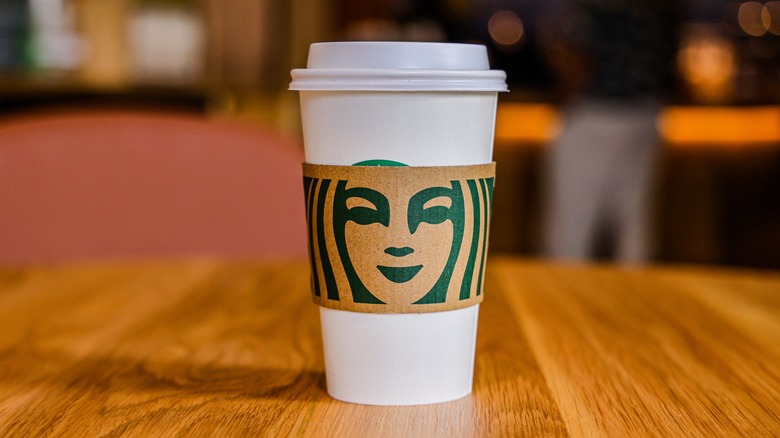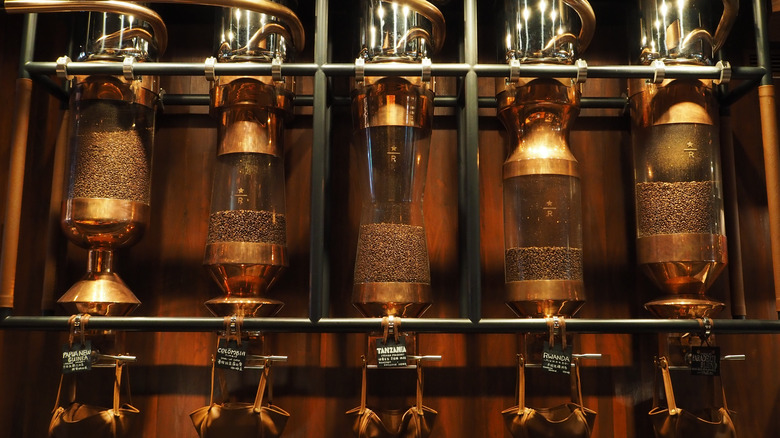What Makes The Starbucks Reserve Latte Different From A Regular One?
Starbucks fans flock to stores over and over again for its unique lineup of hot drinks. But, the coffee giant offers one particularly unique line, and there's a chance you might not have heard of it before. Introducing Starbucks Reserve: The line that's specially designed to be a high-end java iconoclast. CEO Howard Schultz introduced the "Roastery" concept in 2017, then opened the doors to the first brick-and-mortar location in 2018, says NBC News.
Today, Starbucks has dedicated Reserve Roasteries in operation in six major cities around the world: New York City, Seattle, Chicago, Tokyo, Shanghai, and Milan. But, according to the Starbucks Reserve website, select beverages made with Reserve espresso are also sold at over 1,500 regular Starbucks locations.
When beans arrive at Starbucks Reserve Roasteries, they're still green — totally unroasted. In fact, the NYC Roastery located in Manhattan's Chelsea Market is home to a 30-foot hammered copper roasting cask. It cranks out more than 1.5 million pounds of beans every single year, making it the largest coffee roasting plant in Manhattan — and every Starbucks Roastery location is outfitted with a custom roasting cask. But, what makes Reserve different from normal espresso? And what makes the Starbucks Reserve latte different from a regular one?
Reserve means small batches and choosy sourcing
There are two factors that set Reserve espresso apart from a normal batch: the roasting process and curated sourcing, according to the Starbucks Reserve website. For Reserve beans, Starbucks roasters create a unique, tailored roast for each individual batch of beans that comes through. The roast is meticulously altered every time to complement the idiosyncratic flavor and aroma notes of the beans. Plus, Reserve beans are sourced from small-scale growers, family-run farms, and cooperatives to find the rarest beans.
According to Starbucks, the Reserve Latte is made from steamed milk and foam like its other latte offerings, but the small-lot Starbucks Reserve espresso is what makes it unique. Another similar offering, Starbucks Reserve Hazelnut Bianco Latte, is made with house-made hazelnut-infused milk. But, in the regular Reserve Latte, there's no elevated milk or flavoring to be found: the Reserve espresso speaks for itself.
Coffee Affection (which ranks the Starbucks Reserve Latte as the third-best drink on Starbucks' menu) notes that the drink isn't necessarily "flavored," like the iconic pumpkin spice latte. Yet, says the outlet, the Reserve beans lend a more intense, unique taste to the espresso that fans of the regular Starbucks latte might find "unusual." Indeed, "intense" might be a good word to describe the drink. Per The Cozy Coffee, there's 135 mg of caffeine in a Grande Reserve Latte, and a Venti packs four shots of espresso. So indulge, but proceed with caution.

